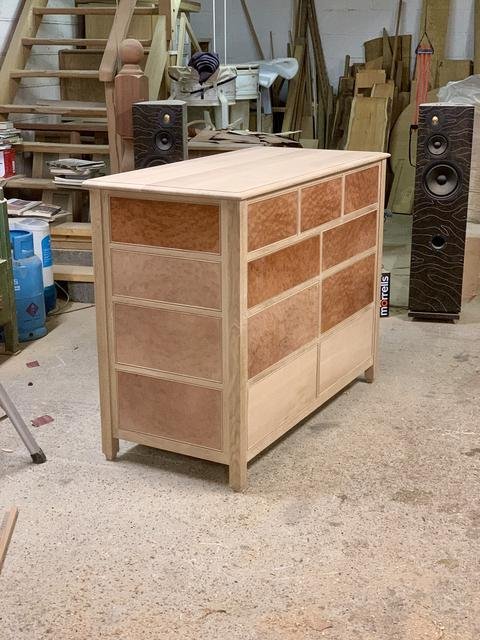Yes, for summary - why I would compare those two:
- AEB-L is a lower carbon but very fine grained (tough) stainless steel that's also a bit low on the chromium side - it's had long use in razor blades and the grain size is uncanny for a stainless - smaller than a lot of carbon steels.
-XHP, which apparently duplicates V11 based on analysis other folks have done is not nearly as small in particle size, but it's very high in carbon (which gives someone playing in the open atmosphere a little to spare when heating to a high temperature), and the quality of a powder metal means that from the very beginning, each little couple-of-micron particles is like a separate full composition ingot. As the steel is normalized, carbides form and the actual carbide size increases past the original particle size, but the starting point offers a cheat in that a home-shop dude doesn't have to normalize the steel to get the chromium in solution - I'm guessing that doing so may actually cause carbide size to increase (I've planed with plane irons a few times and taken a picture of the carbides - which look like they're around 2-5 or 7 microns (they're not all identical) in micrographs of commercially treated steel vs. those in my samples - that are no larger and possibly slightly smaller).
What's missing if you don't normalize the steel -I don't really know if the starting structure is good, but it may turn out better for reasons other than carbide size.
For a non-PM steel with big carbides, you can't just cheat like this because those big carbides need to be dissolved into solution.
I don't have a comparison for XHP, but for D2, which is not enormously different (just less carbon and less chromium), the ingot version looks like this:
https://i1.wp.com/knifesteelnerds.com/wp-content/uploads/2019/05/1000X-D2.jpg?w=750&ssl=1
The PM version looks like this:
https://i2.wp.com/knifesteelnerds.com/wp-content/uploads/2019/05/1000X-CPM-D2-2.jpg?w=750&ssl=1
Note the drastic difference in particle uniformity, which means when bits break off of the edge, they come off very uniformly on the latter, but not so much on the former. For scale, the larger groups of carbides are over a thousandth of an inch and they'll take some peripheral metal. In the powder metal version, they're all a small fraction of a thousandth of an inch (25 microns or so is a thousandth and the 20 micron scale is at the bottom of the picture).
If you heated the ingot D2 to 1900 degrees in the open atmosphere and left it there for half an hour, I don't think anything good would come out of it - the carbon and chromium would probably both migrate.
When you're working with this kind of stuff, you just go the crude way - get some bars, look at the schedule, cheat, see what happens. If it's no good and nothing reasonable makes it good, then stick to the stuff that works well.
I'd far rather have a 62 hardness AEB-L knife than XHP, but I can't heat treat it to that hardness, so the knives are XHP. AEB-L costs something like 1/5th or 1/6th as much, has a far finer grain and almost as much wear resistance. And is probably slightly closer to being a true stainless.






































